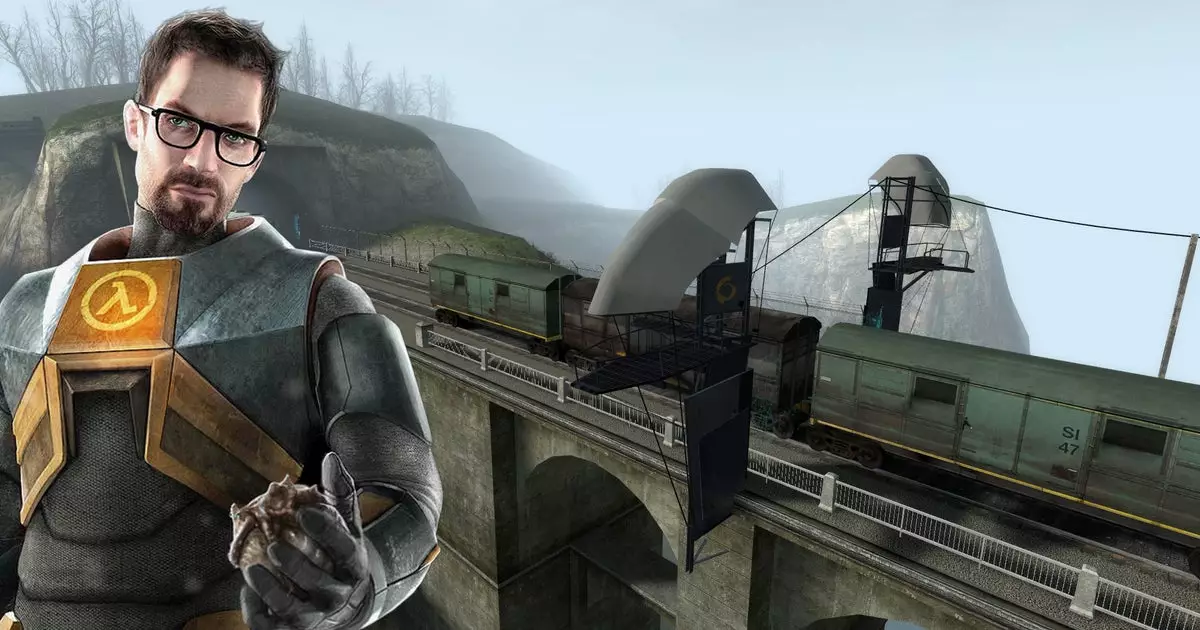In the landscape of modern gaming, where spectacular visuals and complex mechanics often overshadow core gameplay, it’s refreshing to see a beloved classic like *Half-Life 2* receive a subtle yet impactful update. This update isn’t about adding new content or overhaul graphics but about tweaking a familiar mechanic—the speed of a train in the “Highway 17” segment—to restore a piece of the game’s original challenge. Such modifications, seemingly minor on the surface, speak volumes about how game developers recognize the importance of preserving the integrity and intended experience of their classics. They serve as gentle reminders that sometimes, delaying or complicating the player’s path is part of the designed thrill—yet when that challenge becomes inadvertently harder due to physics updates or programming shifts, it can diminish the game’s nostalgic joy.
This specific change—restoring the train’s speed to better match the game’s original difficulty—highlights a deep understanding of the player experience. The train has historically been a test of timing and reflexes, a tense obstacle that players learned to master—or to strategize around—over nearly two decades. By adjusting this element, Valve subtly reinstates a challenge that balances difficulty with fairness, reaffirming that *Half-Life 2* is more than just a shooter; it’s an intricate choreography of tension, skill, and mastery.
Beyond Nostalgia: The Significance of Minor Updates
While some may dismiss these late-stage tweaks as trivial or purely cosmetic, they actually touch on an essential aspect of game design—respect for the game’s original intent. It’s tempting to see such updates as mere nostalgia pandering, but in reality, they demonstrate a genuine dedication to quality and authenticity. The correction of wall collisions and NPC interactions, for example, might seem like small bugs, but they reflect a nuanced awareness of how players remember and interpret their experience of the game.
These updates also reveal a broader, often-unseen effort: a commitment to maintaining the relevance and integrity of a game that has persisted for more than two decades. The dedicated developer or caretaker, obsessively refining collision detection or fixing encounters, embodies an ethic that values player satisfaction and the preservation of a game’s spirit. It’s easy to forget that behind every classic game is a complex web of code, and just like a fine antique, it requires ongoing care to remain functional and true to its original form.
The Ritual of Preservation in a Digital Age
The patch notes for *Half-Life 2* highlight a fascinating aspect of gaming culture—the obsession with preservation and detail. Unlike modern games that often work with ongoing live service updates, classic titles rely heavily on “post-launch” tweaks to keep their legacy alive. In this context, small fixes serve as a form of digital conservation, ensuring that aged titles continue to provide a fair challenge and the intended experience.
This process also sheds light on the role of the developer as both engineer and curator. The notion of an “invisible caretaker” who tirelessly patches, adjusts, and preserves reflects a passion that goes beyond commercial interests. It’s about safeguarding the history and artistry behind classic gaming—an act akin to restoring a masterpiece so future generations can experience it in its intended glory. These incremental improvements, therefore, are not just technical footnotes but acts of respect for the original designers’ vision.
The Community and the Mythology of Mastery
Old games develop a mythology rooted in shared experiences and collective mastery. The idea that players once easily beat the train or navigated collision issues becomes part of that game’s lore. Small updates, like the recent train speed adjustment, have the power to reshape that mythology—reminding players that the challenges are not fixed artifacts but dynamic elements that can adapt over time. They renew a sense of possibility, encouraging players to revisit and reimagine strategies—a testament to the enduring nature of well-crafted game mechanics.
The existence of a meticulous figure—whether real or imagined—dedicated to fine-tuning a 20-year-old game evokes a romantic ideal of game preservation. It’s a labor of love, driven not by profit but by reverence for the art form. This ongoing care enriches the community’s connection to the game, transforming it from a static relic into a living, breathing piece of interactive history.
In the end, such updates exemplify the transformative power of small, thoughtful changes—they breathe new life into old challenges, rekindle the thrill of mastery, and reinforce the timeless truth that, in gaming, sometimes the journey is more important than the destination.

